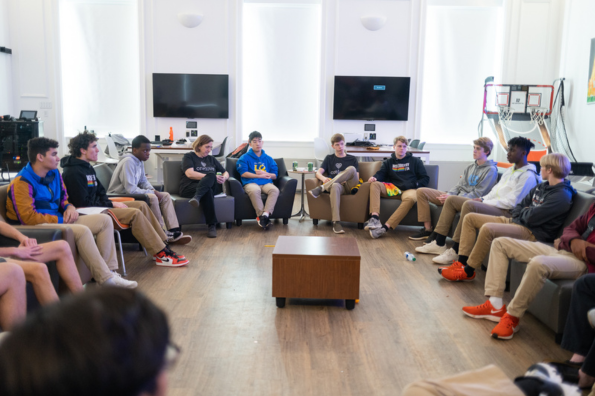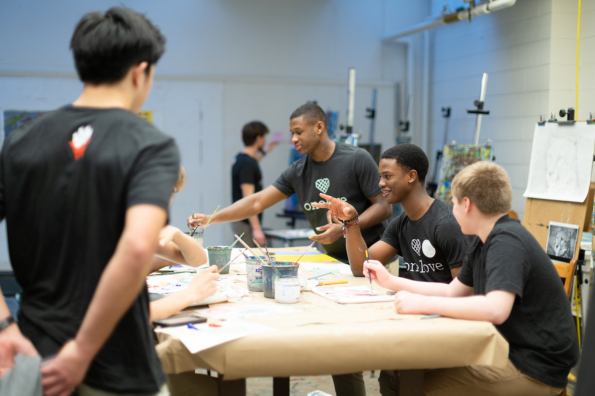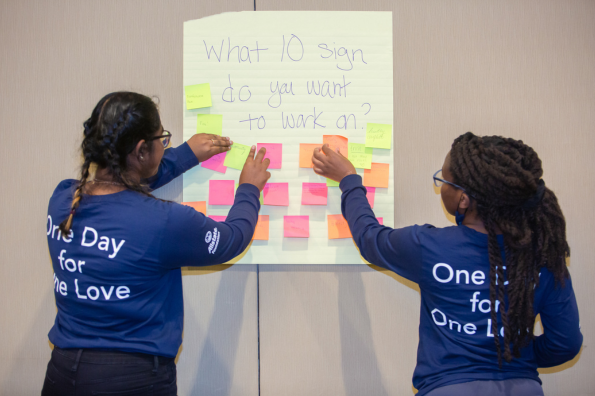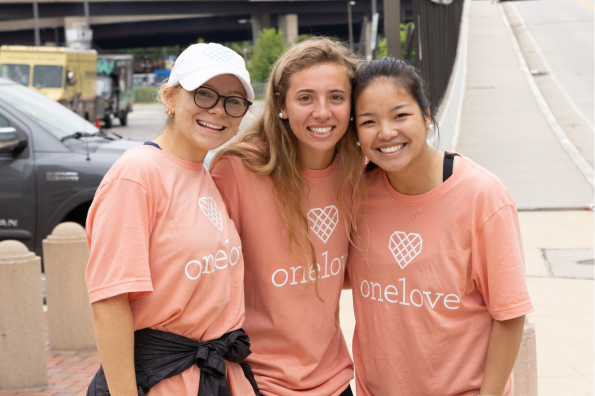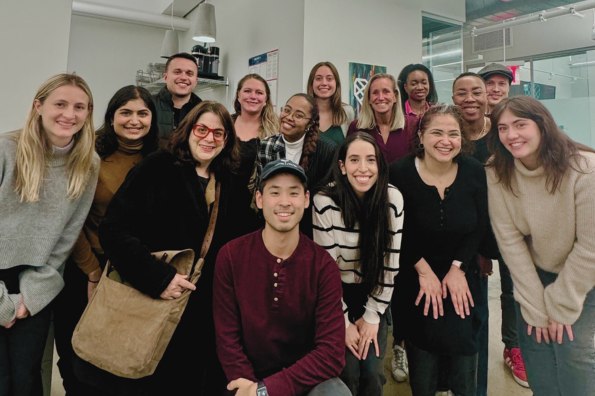Sexual orientation and gender identity can be confusing when you don’t fit into the heteronormative and cis-normative sex education you’re often taught in school. With all of the emphasis on heterosexual intercourse and virginity, sex education largely invalidates queer and non-binary youth.
According to the Human Rights Campaign’s Sexual Health Report only four states — California, Colorado, Iowa and Washington — and the District of Columbia have laws requiring sex education be inclusive of LGBTQ youth. Additionally, only 12 states require that sexual orientation be a topic for discussion in sex education classes at all.
Part of learning to become a healthier partner is learning to have healthy sexual relationships. To do this, sex education must encompass all sexualities without assuming gender. And young people, including trans and queer youth, should be aware of their options for protection.
So, let’s imagine a perfect world where each state mandates LGBTQ+ inclusive sex education and every classroom held a discussion on the full spectrum of gender identities and sexual orientations–amazing, right?! Since this isn’t the world we live in and inclusive sex-education is notoriously inconsistent, here are six things about gender identity and sexuality you likely did not learn in sex-ed.
Let’s Start With The Basics: Gender & Identity
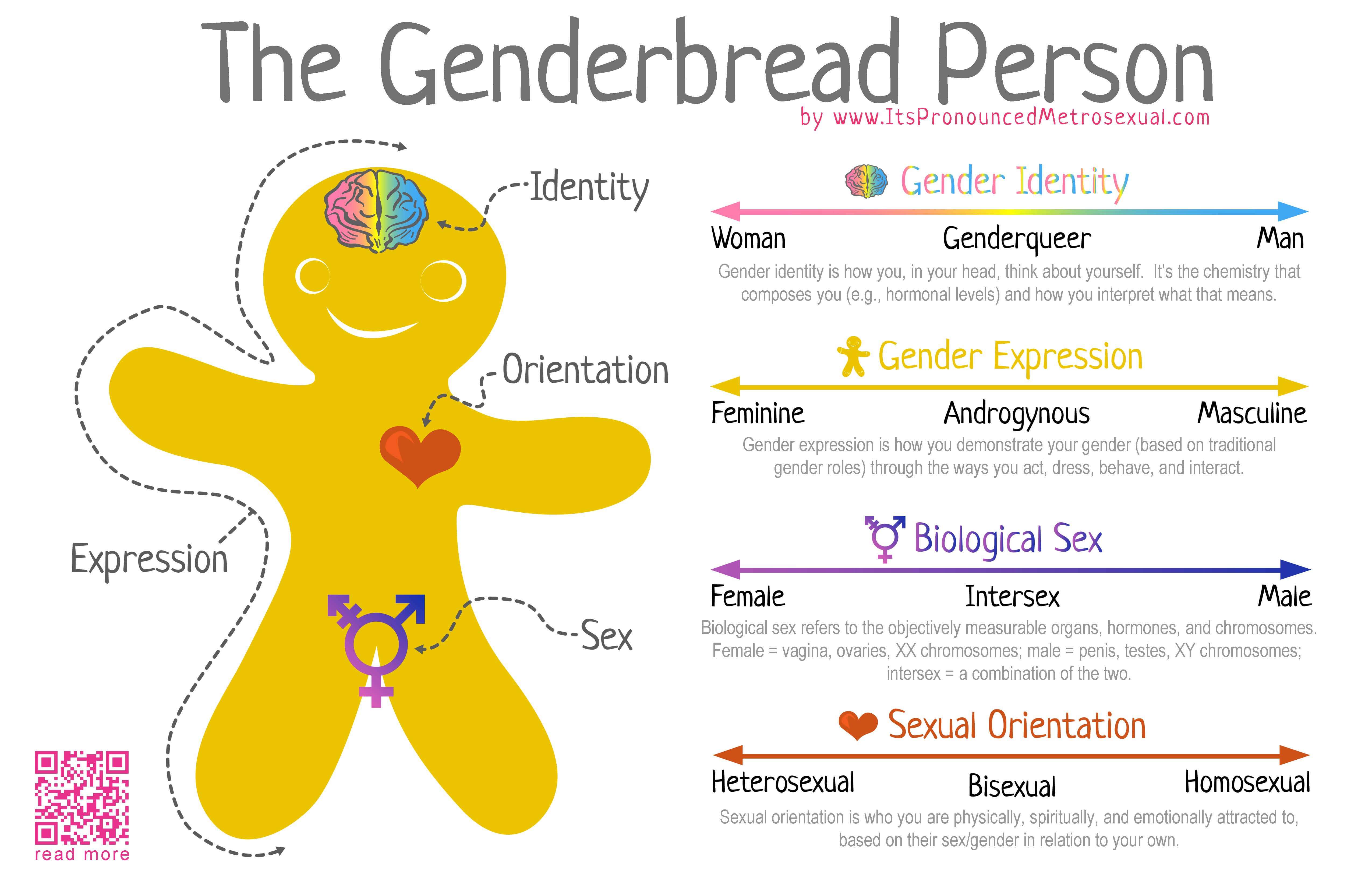
*The infographic above highlights the difference between gender identity, gender expression, biological sex, and sexual orientation. See more at itspronouncedmetrosexual.com
1. Gender Does Not Determine Who You’re Attracted To
Sexual orientation is who you are romantically, emotionally, or sexually attracted to, whereas gender identity is the gender(s) you may or may not identify with and express yourself as (gender expression). Your gender identity may correspond with your assigned sex at birth, but it doesn’t always. And more importantly, your gender identity does not determine your sexual orientation or the people you’ll want to be romantically involved with.
Side Note: Some people don’t feel like they fit into any one gender identity and that’s totally fine. Feel free to use whatever labels you feel comfortable with or none at all.
2. A Quick Refresher on LGBT+ Terminology
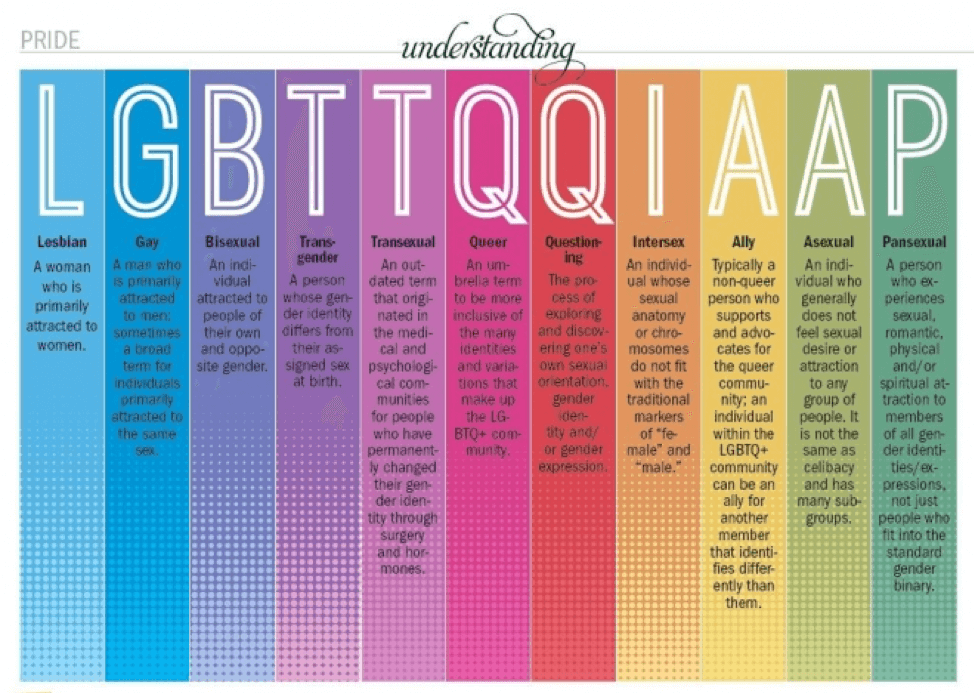
Image source: Citybeats.com
Terminology matters because no matter how someone presents themselves, whether they’re a partner or friend, you should never assume their gender identity. Why? Because misgendering someone is awkward at best and deeply hurtful at worst. And, as young people embrace a full spectrum of gender identities and labels that go beyond he and her, the chances of misidentifying someone become significantly greater.
Let’s cover a few terminology basics! There are many different variations of the LGBT+ acronym, some people prefer to say LGBT+, while others use the full acronym, LGBTQQIAAP, whichever way you prefer to write it, LGBT+ is always inclusive of everyone in the community. Below is a quick breakdown of the meaning behind the acronym:
L – Lesbian: a woman who is attracted to other women.
G – Gay: a man who is attracted to other men or people who identify as homosexual.
B – Bisexual: a person who is attracted to both men and women.
T – Transgender: a person whose gender identity is different from the sex they’re assigned at birth.
Q – Queer: an umbrella term meaning non-heterosexual. Read this article for more definitions of what queer can stand for.
Q – Questioning: a person who is still exploring their sexuality or gender identity.
I – Intersex: a person whose body is not definitively male or female. This may be because they have chromosomes which are not XX or XY or because their genitals or reproductive organs are not considered “standard.”
A – Asexual: an umbrella term characterized by not feeling (or lacking) sexual attraction or a desire for partnered sexuality. Some asexual people still do have sex.
A – Ally: a person who identifies as straight but supports people in the LGBTQ+ community.
P – Pansexual: people who have romantic, sexual or affectional desire for people of all genders and sexes.
3. Yes, Asexuality is a Thing!
Asexuality is a buzzy term you might have noticed around the internet. We’re highlighting it here because, contrary to popular belief, love doesn’t always equal sex. For instance, asexuality is an umbrella term that describes someone with limited to no sexual attraction. But unlike celibacy, which is the choice to abstain from sex, asexuality is a sexual orientation that exists on a spectrum and includes people who are content with non-romantic relationships (aromantic), people who experience sexual attraction only after they form a strong bond with a partner (demisexual), and people that are somewhere between sexual and asexual (Grey-A).
Side note: There is also a difference between sexual attraction and libido (sex drive) and someone who doesn’t experience sexual attraction can still have a strong libido that isn’t directed toward anyone.
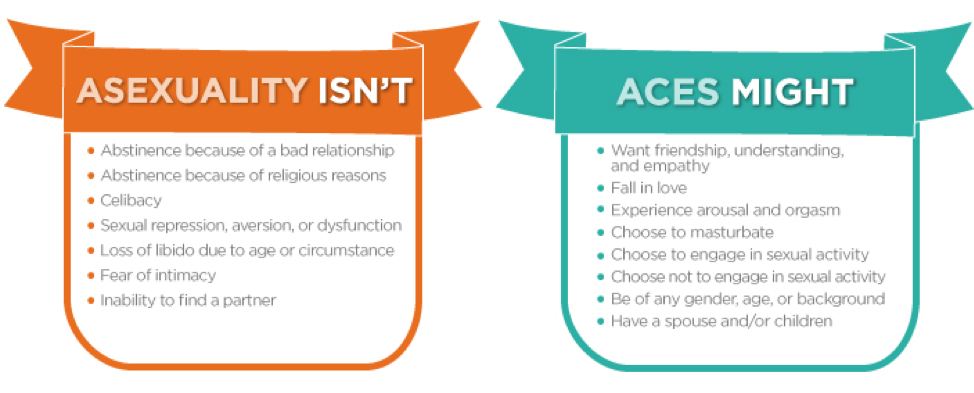
Image Source: theTrevorProject.org
So, what does intimacy look like for asexual partners who don’t feel sexual attraction? To start, people have differing opinions on what is and is not sexual. For example, some people may view kissing as platonic, or making out as a way to connect with their partner without it being sexual.
Bear in mind that even if an asexual person doesn’t experience sexual attraction, they may still consent to have sex to please their partner. On the other hand, if sex is off the table, not all physical intimacy has to be. There are forms of physical contact that you and your partner can engage in without it being sexual, such as holding hands, spooning, snuggling, rubbing your partner’s back, playing with their hair, or anything else they’d prefer. You both could even just lay together naked! Yes, it is possible to be nude with your partner without having sex – this is more about being two people appreciating each other’s bodies and enjoying the sense of touch. Any of the sensual activities listed here can be done either clothed or naked, it is really up to you and your partner!
Now, Let’s Talk About Sex!

4. Sex is More Than Penetration
Virginity is almost exclusively discussed as a sexual rite of passage for couples in heterosexual relationships which leaves queer youth and queer women in particular left to grapple with what virginity means to them. In reality, losing your virginity shouldn’t be measured by penis-in-vagina penetration since sex can include a combination of sensual activities like oral, anal, vaginal, fingering, and grinding. Ultimately, as queer youth, you get to decide what losing your virginity means to you.
5. You Should Talk About Sex with Your Transgender Partner

You should always speak with your partner about their sexual do’s and don’ts, but this is especially true when dating a transgender person, here’s why:
Some transgender people deal with a significant amount of gender dysmorphia, or a sense of anxiety that causes them to worry about their physical appearance, that can be triggered or heightened during sexual encounters. While it’s not unusual for people to assume their partner will assume a certain role during sex this can be awkward for people whose assigned gender doesn’t match who they actually are. Being mindful during sex and speaking to your partner often about their personal boundaries is the best way to mitigate a sexual encounter that makes your trangender partner feel uncomfortable.
6. Condoms Are King/Queen
Sex is amazing, but it can also be nerve-wracking and a big part of this stress, sexual performance aside, comes from fear of contracting unwanted diseases. According to the Center for Disease Control and Prevention, gay and bisexual men accounted for 67% of the 40,324 new HIV diagnoses in the United States in 2016.
While some sex educators claim the more sexual partners you have the more likely you are to contract an STI (sexually transmitted infection), this is not necessarily true. In truth, your risk of contracting an STI depends solely on how safe you are during sex not how many sexual partners you have. And when it comes to preventing unwanted STIs, condoms are king and queen since they’re “82 percent effective if used typically and 98 percent effective, if used perfectly,” says Brooklyn-based sexual health activist and writer, Emma Kaywin, in her article “How To Have Casual Sex Safely.” Lastly, you cannot get an STI from your partner if they don’t already have one. One of the easiest ways to create a safe sexual environment is to talk to your partner about getting tested beforehand.
Side note: If you do not currently have HIV but are at a high risk, you can take PrEP, a daily pill that can help prevent HIV. Talk with your doctor or stop by a health center to determine if this may be a good option for you. Ultimately, the only risk-free way to avoid STIs is to abstain from sex altogether.
7. Consent is a Non-Negotiable

Whatever you may or may not identify as in the LGBTQ+ community, it is paramount to receive consent before engaging in sex. Consent is simply clear and explicit permission for whatever is being agreed upon or in question of being done. It may seem awkward at first, but I promise that asking for consent will not ruin the mood. Actually, receiving an affirmative “yes” to sex is not just required, it can be sexy. Planned Parenthood gives an in-depth breakdown of what consent is and how it is given, we highly recommended you check out that article here.
Side Note: Consent can be taken away at any point in time during a sexual act by either partner for any reason and it is up to you and your partner to respect when consent is revoked.
Tap Into Your Resources

As a supporter of the LGBT+ community and advocate for healthier relationships, I believe in inclusive sex education that is respectful of all sexual orientations and gender identities. This article is certainly not the end all be all of this topic, but it is a start. If you’re interested in learning more about creating a safe sexual environment for you and your partner or if you’re curious about other facts about sex you may not have learned in sex education class than I encourage you to tap into your local resources. Visit an LGBT+ Center or a health center that provides LGBT services, such as Planned Parenthood.
Browse by Category

How to Have Healthy Holiday Conversations with Family (and Prep Your Partner)
The holidays are a time for family, good food, and—let's be real—sometimes intense conversations. Whether it's politics, lifestyle choices, or…
How to End a Summer Romance or Friendship
Summer flings and friendships can feel fleeting. So why is…
Celebrate Your Freedom: Independence in Relationships
As Independence Day rolls around, let’s chat about something just…
Practicing Equality in Your Relationships
Equality is one of One Love’s 10 Signs of a…
How to Practice Allyship Using the 10 Signs
During the month of June the United States observes both…
